Dighton Rock – Centuries-Old-Mystery Still Unsolved
A. Sutherland - AncientPages.com - Dighton Rock has been a subject of intense debate, curiosity, and wonder for centuries.
It’s a rock with a mysterious past we are unable to decipher. Its cuneiform-style inscriptions have long intrigued and puzzled observers and researchers.
A 40-ton boulder is a slanted, six-sided block approximately 5 feet (1.5 m) high, 9.5 feet (2.9 m) wide, and 11 feet (3.4 m) long.
It was found partially submerged on the Taunton River at Berkley, Massachusetts (formerly part of the town of Dighton).
Covered with petroglyphs and carved designs of ancient and uncertain origin, the rock is now installed in a memorial building nearby in Berkley.
In his book, “The Wonderful Works of God Commemorated,” published in 1690, the Rev. Cotton Mather gave this description:
"Among the other Curiosities of New-England, one is that of a mighty Rock, on a perpendicular side whereof by a River, which at High Tide covers part of it, there are very deeply Engraved, no man alive knows How or When about half a score Lines, near Ten Foot Long, and a foot and half broad, filled with strange Characters: which would suggest as odd Thoughts about them that were here before us, as there are odd Shapes in that Elaborate Monument.."
Over the last three centuries, people were making a series of accusations about the origins of the rock. More than 20 theories have been proposed about its origins Ezra Stiles (1727 -1795), an American academic, theologian and author, was convinced the rock was carved by ancient Phoenicians.
Some speculated that the Vikings or Native Americans did it; others credited early Portuguese explorers with the Dighton Rock inscription.
In 1784, Count Antoine Court de Gobelin, a French nobleman, suggested that Dighton Rock commemorated a visit to the Massachusetts shore “in very ancient times” by a group of sailors from Carthage on the shores of the Mediterranean.
In 1807, Samuel Harris, a Harvard scholar, claimed that he had deciphered three ancient Hebrew words in Phoenician lettering — “king,” “priest” and “idol.”

In 1963, the rock was removed from the river and installed in a museum in the Dighton Rock State Park. In 1980 it was listed on the National Register of Historic Places. Credit: Marcbela - CC0
In 1831, Ira Hill, a schoolteacher from Maryland, claimed he had deduced from the Old Testament that the rock was engraved “in the second month in the tenth year of the reign of King Solomon by an expedition of Tyrians and Jews …”
In his book "1421: The Year China Discovered the World" published in 2002, Gavin Menzies proposes that the Chinese left the inscription for us, when they reached America 70 years before Columbus.
We can only say that despite a few hundred years of speculation, the extensive petroglyphs on the rock have still not been explained conclusively.
The Dighton Rock still puzzles us because its mysterious hieroglyphs have not been deciphered.
Written by – A. Sutherland - AncientPages.com Senior Staff Writer
Updated on July 3, 2024
Copyright © AncientPages.com All rights reserved. This material may not be published, broadcast, rewritten or redistributed in whole or part without the express written permission of AncientPages.com
Expand for referencesReferences: Dighton Rock
David Goudsward, "Ancient Stone Sites Of New England And The Debate Over Early European Exploration"
More From Ancient Pages
-
 Treasure Of 1,753 Roman Silver Coins Accidentally Discovered In Poland
Archaeology | Apr 1, 2020
Treasure Of 1,753 Roman Silver Coins Accidentally Discovered In Poland
Archaeology | Apr 1, 2020 -
 Nammu: Sumerian Goddess Who Got The Idea To Create Mankind In The Image Of Gods
Featured Stories | Apr 1, 2019
Nammu: Sumerian Goddess Who Got The Idea To Create Mankind In The Image Of Gods
Featured Stories | Apr 1, 2019 -
 On This Day In History: Brazil Was Officially Discovered – On Jan 26, 1500
News | Jan 26, 2017
On This Day In History: Brazil Was Officially Discovered – On Jan 26, 1500
News | Jan 26, 2017 -
 Lhasa’s Potala Palace: Greatest Building In Tibet With History Of 1300 Years
Civilizations | Nov 23, 2018
Lhasa’s Potala Palace: Greatest Building In Tibet With History Of 1300 Years
Civilizations | Nov 23, 2018 -
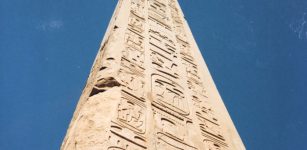 How On Earth Did The Ancient Egyptians Raise Their Colossal Obelisks?
Featured Stories | Feb 14, 2022
How On Earth Did The Ancient Egyptians Raise Their Colossal Obelisks?
Featured Stories | Feb 14, 2022 -
 Face Of Very Old “Vampire” Buried In Connecticut Reconstructed
Archaeology | Nov 9, 2022
Face Of Very Old “Vampire” Buried In Connecticut Reconstructed
Archaeology | Nov 9, 2022 -
 Sutton Hoo Burials May Belong To Anglo-Saxons Who Fought For The Byzantine Empire – Professor Suggests
Archaeology | Jan 10, 2025
Sutton Hoo Burials May Belong To Anglo-Saxons Who Fought For The Byzantine Empire – Professor Suggests
Archaeology | Jan 10, 2025 -
 Ymir – Primordial Norse Giant Whose Body Parts Formed The World
Myths & Legends | Apr 5, 2018
Ymir – Primordial Norse Giant Whose Body Parts Formed The World
Myths & Legends | Apr 5, 2018 -
 Baby Carriers Were Used 10,000 Years Ago – New Evidence
Archaeology | Sep 27, 2022
Baby Carriers Were Used 10,000 Years Ago – New Evidence
Archaeology | Sep 27, 2022 -
 Who Was The Sapa Inca?
Featured Stories | Jul 29, 2024
Who Was The Sapa Inca?
Featured Stories | Jul 29, 2024 -
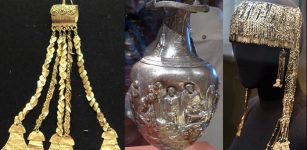 Priam’s Treasure – Authentic Trove From Homeric Troy Or Deception?
Artifacts | Jun 11, 2021
Priam’s Treasure – Authentic Trove From Homeric Troy Or Deception?
Artifacts | Jun 11, 2021 -
 Europe’s Earliest Culture Of Aurignacian People Made Amazing Images With Dots
Archaeology | Mar 5, 2017
Europe’s Earliest Culture Of Aurignacian People Made Amazing Images With Dots
Archaeology | Mar 5, 2017 -
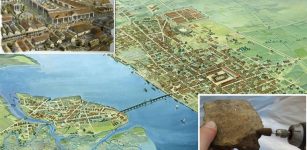 London Is Twice As Old As Previously Thought – New Discovery Reveals
Archaeology | Apr 9, 2020
London Is Twice As Old As Previously Thought – New Discovery Reveals
Archaeology | Apr 9, 2020 -
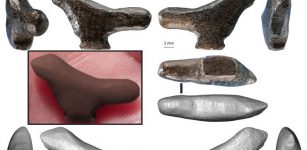 Paleolithic Standing Bird Figurine – East Asian 3-D Art – Recovered From Refuse Heap
Archaeology | Jun 23, 2020
Paleolithic Standing Bird Figurine – East Asian 3-D Art – Recovered From Refuse Heap
Archaeology | Jun 23, 2020 -
 Shishak (Sheshonq I): Egyptian King Who Invaded Judah And United Egypt
Featured Stories | Feb 28, 2019
Shishak (Sheshonq I): Egyptian King Who Invaded Judah And United Egypt
Featured Stories | Feb 28, 2019 -
 On This Day In History: Francis Baily First Observed ‘Baily’s Beads’ – On May 15, 1836
News | May 15, 2016
On This Day In History: Francis Baily First Observed ‘Baily’s Beads’ – On May 15, 1836
News | May 15, 2016 -
 Controversial Unexplained Ancient Mystery In Mongolia – Horrifying Sight – Part 2
Ancient Mysteries | May 2, 2018
Controversial Unexplained Ancient Mystery In Mongolia – Horrifying Sight – Part 2
Ancient Mysteries | May 2, 2018 -
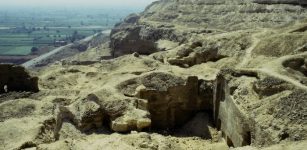 Egyptian Necropolis Of Asyut And Funerary Culture That Dates Back To Old Kingdom
Archaeology | Feb 24, 2020
Egyptian Necropolis Of Asyut And Funerary Culture That Dates Back To Old Kingdom
Archaeology | Feb 24, 2020 -
 Xiahou Dun ‘The One-Eyed’: Faithful Warrior, One Of Cao Cao’s Talented Officers
Featured Stories | Aug 14, 2019
Xiahou Dun ‘The One-Eyed’: Faithful Warrior, One Of Cao Cao’s Talented Officers
Featured Stories | Aug 14, 2019 -
 On This Day In History: Sir Thomas Brisbane, Astronomer, Soldier And Governor Was Born – On July 23, 1773
News | Jul 23, 2016
On This Day In History: Sir Thomas Brisbane, Astronomer, Soldier And Governor Was Born – On July 23, 1773
News | Jul 23, 2016



